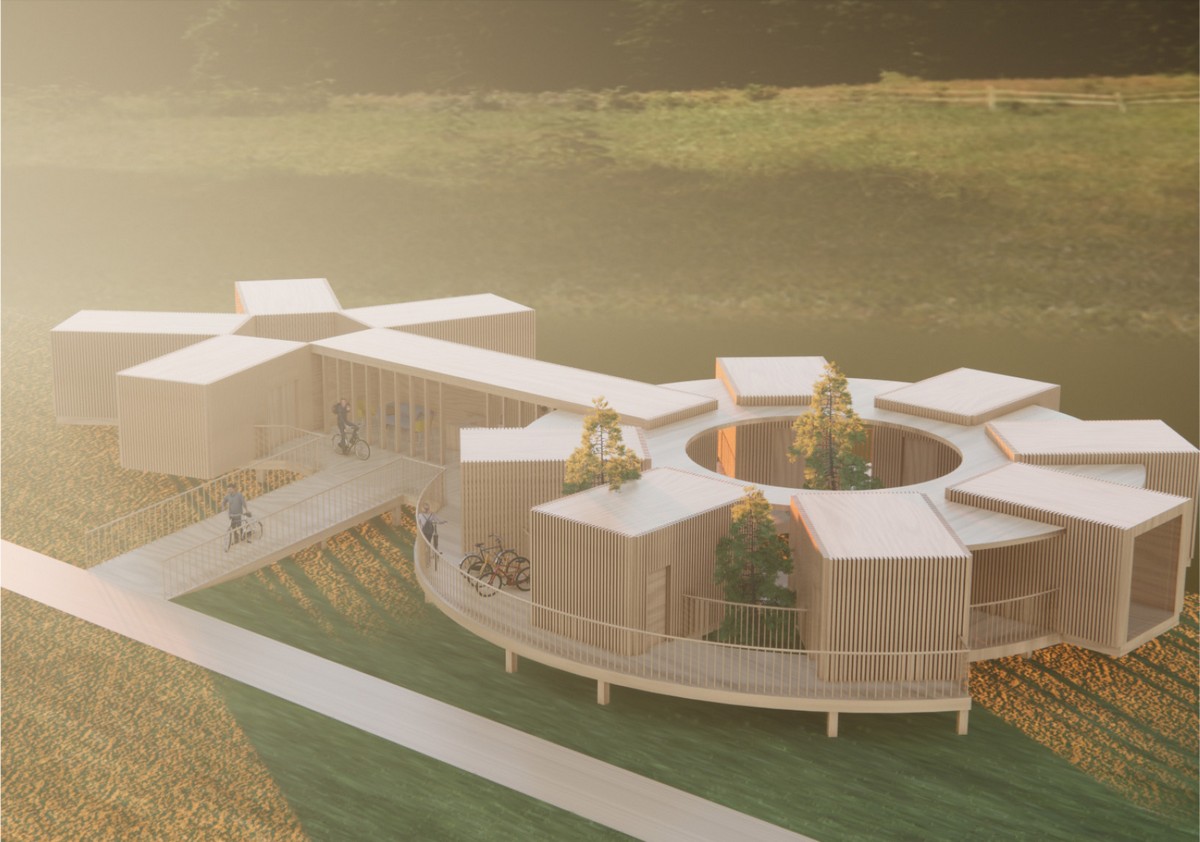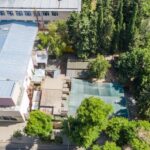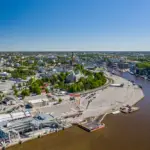Architectural Challenge 2022 Competition, Lithuanian Design Contest Images, Ryterna Modul Building News
Architectural Challenge 2022 Competition
4 January 2023
Architectural Challenge 2022 winners revealed
Organizer: Ryterna Modul
Location: Vilnius, Lithuania
Architectural Challenge 2022 Competition Winners
This year marks the eighth consecutive year of the Lithuanian-organised international competition Architectural Challenge 2022. This year’s theme was a bicycle tourism complex. The best project was a building inspired by the bicycle elements of wheels and stars and their circular motion. Organized by Ryterna Modul, a company that manufactures modular buildings, this year’s architecture competition attracted 100 entries from around the world. The jury looked not only at the idea’s originality but also the sustainability, feasibility, and use of the modular units.
“Today, bicycles are becoming an increasingly integral part of our lives: we use them as a sustainable means of transport, for summer trips with the family, or sport. Cycling, in general, has recently been gaining more and more interest, and in some countries, it is not only a leisure transport but also a full part of a lifestyle (Netherlands, Denmark). We can also see that cycling tourism is growing in popularity, with people cycling around their own country and even taking trips abroad. This catering for cyclists and their needs is the theme of this year’s competition – “Cycling Tourism Complex”. The project itself must not only be innovative but also meet the various expectations of cyclists themselves,” says Arūnas Visockas, CEO of Ryterna modul.
The competition projects were evaluated by architects Donatas Cesiulis, Kęstutis Vaikšnoras, Tomas Skripkiūnas and Ryterna modul representatives Andrius Orlovas and Arūnas Visockas. For the second year in a row, the jury was joined by Dr Ernest Shtepani from Tirana Metropolitan University in Albania. The three winning projects were awarded cash prizes totalling around €2,500.
“The competing architects were tasked with designing a complex for cyclists to stop for a short break or even stay overnight. The complex should include a bicycle repair area, a café or fast food restaurant, accommodation (hostels and private rooms) and sanitary facilities. The project should be suitable for passing cyclists and overnight stays in hostel rooms. Another important aspect of the competition is the realistic feasibility of all the projects and the practical details of how to realize the submitted project,” says Vainius Gabalis of Ryterna modul.
According to the company’s representative, the competition winners impressed the jury with their original ideas and the detailed presentation of the modular building projects.
A building resembling a bicycle mechanism
First prize design by architect Weronika Zaborek from Poland:
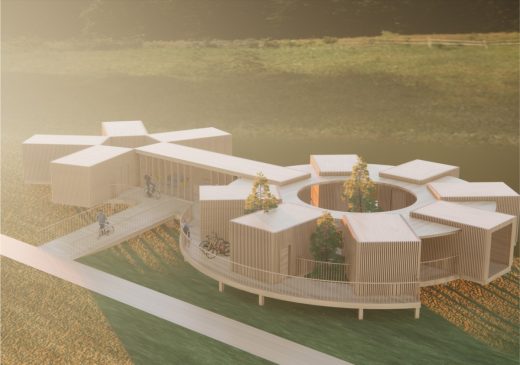
The first prize in this year’s competition went to the project “131313” by architect Weronika Zaborek from Poland. The project was remarkable for its detailed implementation and originality – the bicycle structure inspired the building.
“I wanted to develop a solution that made the most interesting use of modular blocks and was an example of sustainable architecture. The shape of the building was inspired by the architecture of the bicycle and the circular movement of its parts. The arrangement of the modular blocks in a circular network creates different types of terraces and ‘pockets’ that allow users to enjoy the surrounding nature. It also creates circular squares that can be either fully private or semi-public. The complex is raised 1 meter above the ground on stilt foundations, giving users a sense of privacy. Finally, the use of wooden blocks in the design lowers the carbon footprint of the complex,” says first prize winner Zaborek.
According to architect Donatas Cesiulis, who judged the projects and has previously won several prizes in the Architectural Challenge, the first prize winner stood out for both the idea and the detail of its practical implementation.
“The first prize winner’s entry proposes an interesting building structure in which the modules are arranged in a circular plan in two interlocking circles. This solution integrates cycling into the complex’s architecture, organizing visitors’ movement from the larger public outdoor spaces to the smaller private indoor spaces. The structure of the building is iconic, made up of simple, repetitive modules whose systematic arrangement creates an abundance of high-quality public and private spaces. This project has also addressed most practical issues in sufficient detail to be ready for implementation,” says Cesiulis.
Emphasis on sustainability and connection to nature
Second prize design by Takumi Goto and Austeja Judzenytė from France:
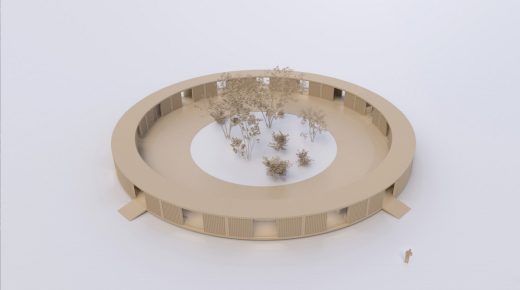
The Velodromes project, awarded second place in the competition, was distinguished by its idea: two buildings are designed as velodromes for bicycle racing and adapted for cyclists’ recreation. Takumi Goto and Austeja Judzenytė from France co-author the project. According to them, the Velodromes project was born out of an attempt to explore the possibilities of a circular complex made up of curved modules. The solution for the competition came to the developers at the beginning of the design process.
Third prize design by Guanzhong Wu and Yanze Wang from China:
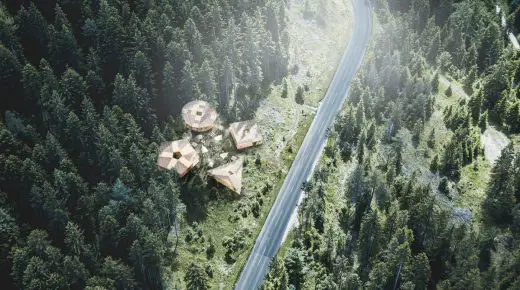
The third prize in the competition went to the project “110746883” by Guanzhong Wu and Yanze Wang from China. Their project focuses on different shapes of buildings that do not require external resources. According to the authors, the autonomous energy supply of the building is significant in the field of cycling tourism, as the energy facilities in the vicinity of the cyclists’ recreational facilities are limited. Therefore, a cycling complex with an energy roof stands out with its sustainable and well-thought-out solution.
“The second prize winners’ entry was very conceptual, with less attention to detail, but very strong in addressing the conceptual design challenges of such a complex. The structure of the building is based on an interpretation of a velodrome: curved modules arranged in a circular pattern form an enclosed complex with a private courtyard that includes a riding track and a recreational space with extensive planting at its centre. The third-placed entry proposes four distinct compositional structures, which are formed by arranging the modules in a plan around central axes. Interestingly, the different compositions of the volumes identify the individual functions of the complex,” says Cesiulis.
Opportunity for bolder experimentation
Summarizing the ideas of the competition, architect Tomas Skripkiūnas, one of the jury members, said that a solid and clear architectural idea is essential in such competitions.
“This is an architectural competition where clarity of the idea and concentration on the chosen theme is crucial. Therefore, a strong and clear architectural idea has become one of the most important factors in evaluating projects. On a more pragmatic level, the winning entries could integrate simple building modules into complexes with architectural appeal and a certain semantic meaning. It was also relevant to the evaluation of the entries that this year’s entries stood out more for their urban solutions,” says Skripkiūnas.
According to V. Gabalis of Ryterna modul, the competition, which has become an annual tradition, is an excellent opportunity for architects to try their hand at designing and presenting projects that require more daring solutions.
“An architectural competition can be a good medium for more daring experiments and unexpected solutions. It is what the entries of the first prize winners were most notable for. Although the first three prizes are awarded in the form of prize money, there is also a lot of value in being able to take their projects to the next level and then realize them or to assess what was missing or not given enough attention and try again next year,” concludes Gabalis.
Ryterna modul is a modular buildings, containers, and mobile structures company with more than 240 employees. In 2020 Ryterna modul increased its production area to 8,500 square meters and its production capacity to 1,700 modules per year from 2021. The company has been selling its products for over 15 years in Lithuania, Finland, Sweden, Norway, Germany, Belgium, Poland, Latvia, Iceland, and other countries.
Architectural Challenge 2022 Competition images / information received 030123
Location: Vilnius, Lithuania, eastern Europe
Lithuanian Design Competitions
Architecture Competitions in Lithuania
Nemunas Island International Design Competition
Design: KILD Architects
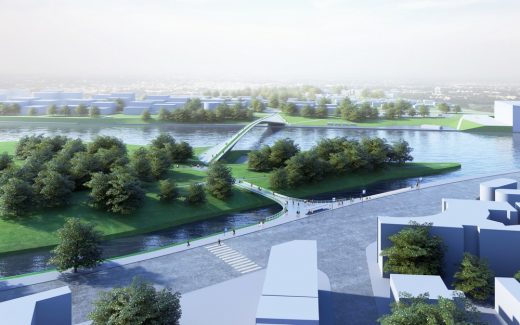
image courtesy of architects
Nemunas Island International Design Competition
Kaunas M.K. Čiurlionis Concert Centre Architecture Competition Finalists
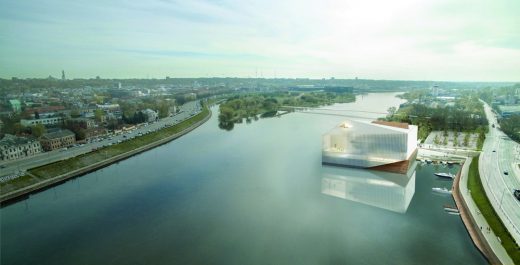
image from architects
Kaunas M.K. Čiurlionis Concert Centre Architecture Contest
Science Island International Design Contest Winners, Nemuno sala (Nemunas Island), Kaunas
Entry by SimpsonHaugh and Partners:
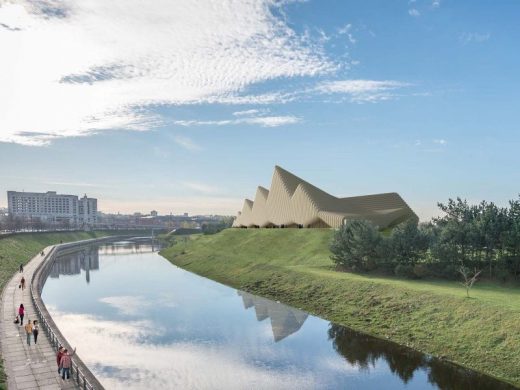
image from architects
Science Island International Design Contest, Kaunas
National Concert Hall Competition Vilnius
Lithuanian Buildings
Lithuania Architecture Designs, chronological list
New Architecture in Lithuania
KIWI, Vilnius
Design: PUPA – Public Urbanism Personal Architecture
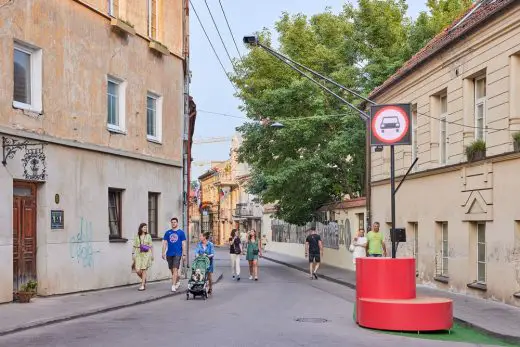
photo : Norbert Tukaj
Interactive Platform KIWI, Vilnius
Vilnius railway station renewal
Design: Zaha Hadid Architects
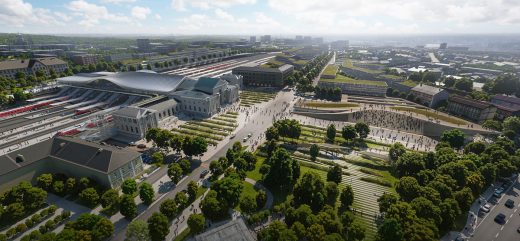
render : Negativ
Vilnius railway station building design
Martynas Mažvydas National Library, Vilnius
Architects: 2XJ
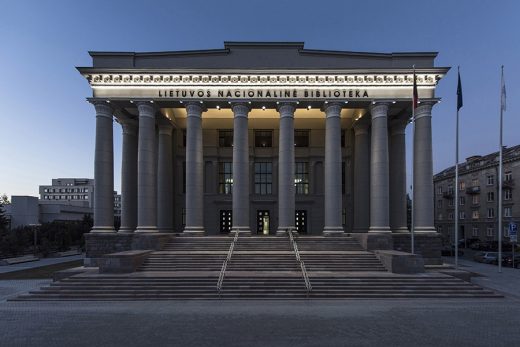
photo : Leonas Garbačauskas
Martynas Mažvydas National Library of Lithuania
Comments / photos for the Architectural Challenge 2022 Competition – Lithuania Architecture Contest Winners page welcome

